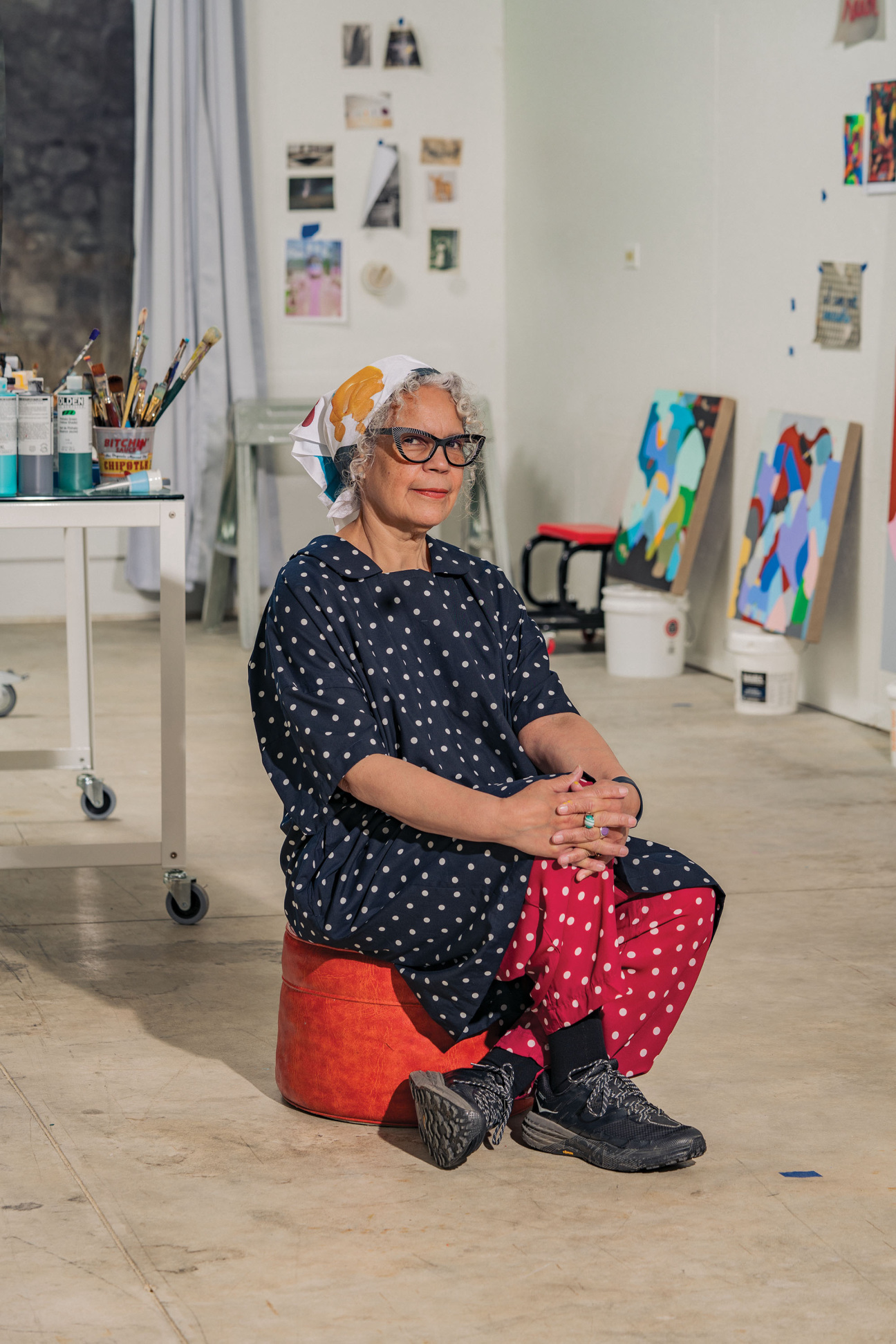
Candida Alvarez became an artist by looking out the window. Growing up in Brooklyn in the 1960s, she spent long stretches gazing at the East River from her family’s 14th-floor apartment in the Farragut housing project. She watched as fog blurred the horizon line and sunbeams ricocheted off the surface of nearby buildings.
“When you look out that window, it’s not just one thing—it’s a space between, where both figuration and abstraction exist,” Alvarez says. Over her five-decade career, the artist has translated her sharp attunement to color, texture, and shape into a relentlessly experimental body of work that spans painting, collage, embroidery, installation, sculpture, and video. Inspired by her vibrant, overlapping forms, the designer Rei Kawakubo tapped Alvarez to collaborate on a collection of shirts for Comme des Garçons in 2017.
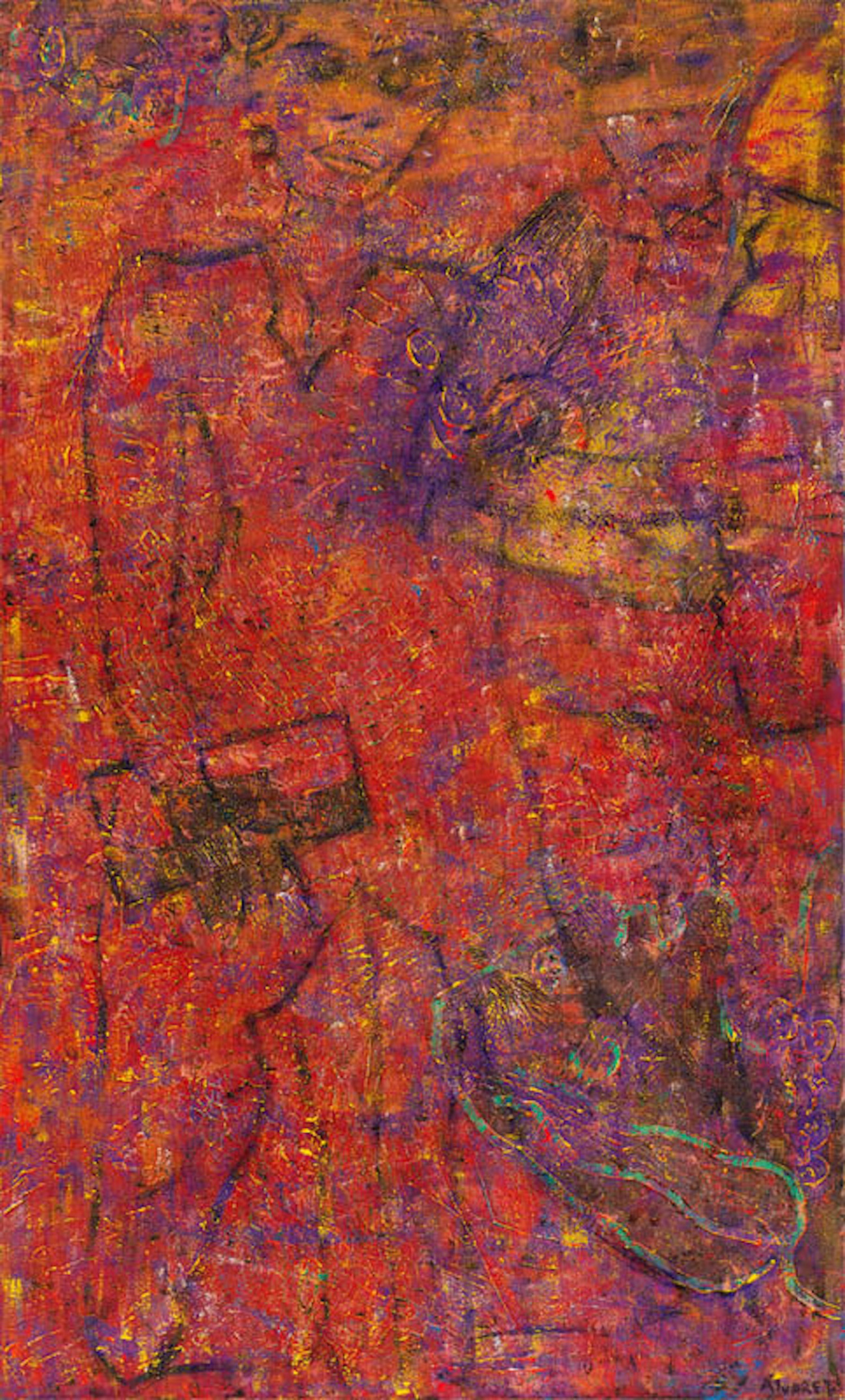
El Museo del Barrio aims to capture the breadth of Alvarez’s creative output in her first large-scale museum survey. On view through Aug. 3, “Circle, Point, Hoop” represents a full-circle moment for the artist, who worked in the New York institution’s curatorial department in the late 1970s.
Although she moved to Chicago in 1998 to teach at the School of the Art Institute of Chicago, Alvarez considers herself a product of New York’s creative community. David Hammons stored snowballs in her freezer ahead of his famous 1983 performance Bliz-aard Ball Sale, which was immortalized in photographs taken by her then-husband, Dawoud Bey. Alvarez also worked alongside fellow ascendant New York artists, including Ursula von Rydingsvard and Pedro Pietri, as part of the CETA Artists Project, a short-lived initiative inspired by the Works Progress Administration that employed 500 creatives to teach classes, organize workshops, and develop public art projects for the city. “Having those rascals, as I call them, around me gave me more passion,” Alvarez says. “I felt like I could do anything I wanted.”
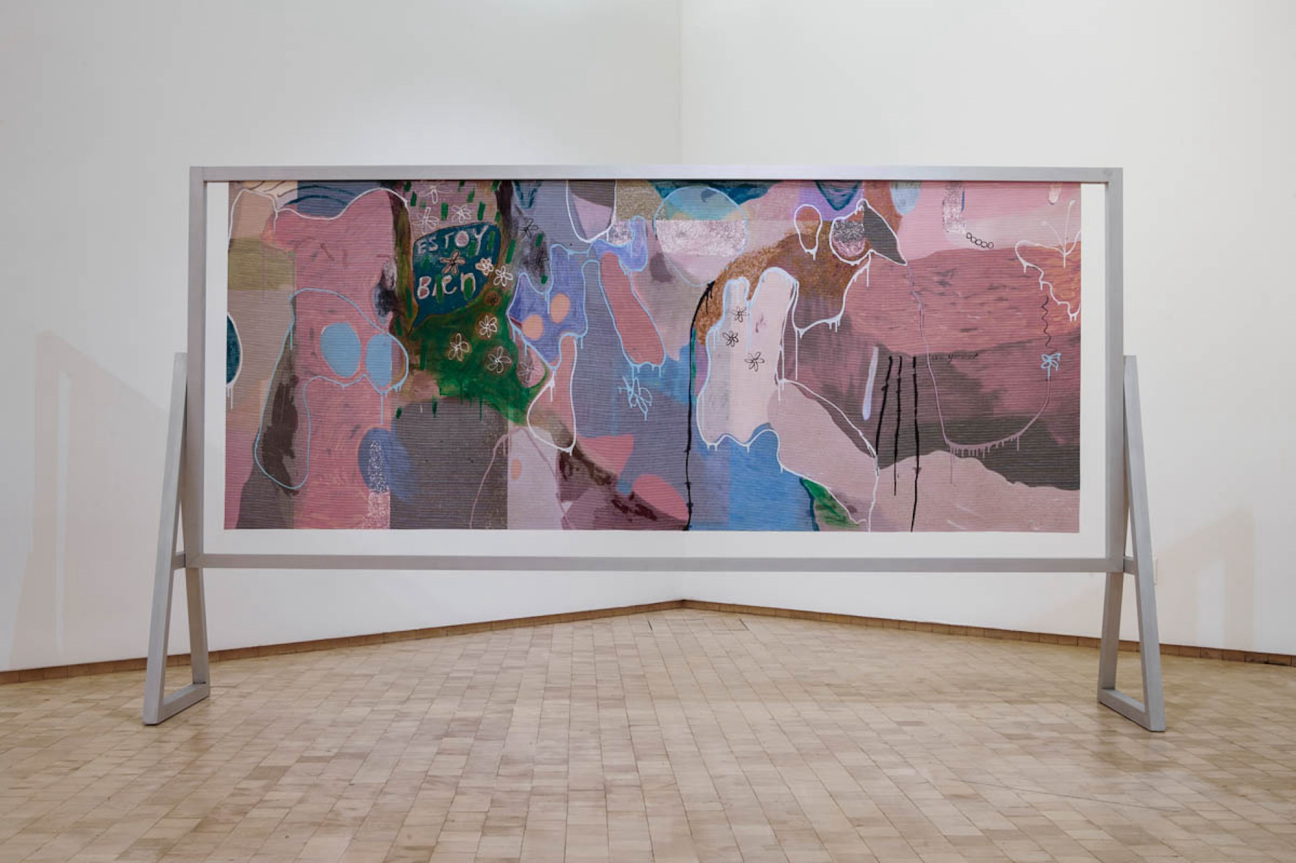
In addition to earlier experiments with paint, embroidery, and assemblage, the El Museo exhibition also spotlights later work, like Alvarez’s “Air Paintings.” The suite of latex ink and enamel compositions on PVC mesh hang from aluminum armatures and can be viewed from the back and front. The series, which made a stir when it debuted at Monique Meloche Gallery in Chicago in 2020, came out of Alvarez’s anxiety following Hurricane Maria in Puerto Rico. (Her parents are from the island and have a family home in Ponce.)
Alongside the El Museo survey, Alvarez will show brand-new work at Gray gallery in New York as part of a two-person show, opening April 30, that puts her paintings in dialogue with the late Bob Thompson, another maverick artist with a cult following.
Together, the two shows will serve as a crucial update to the historical record, which has not always included Alvarez. But she’s not one to brood. “There are moments you feel like you are left out,” Alvarez admits. “I was in the middle of everything.”
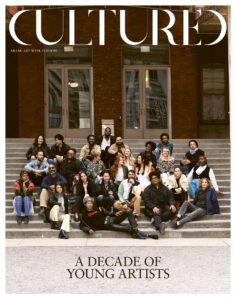
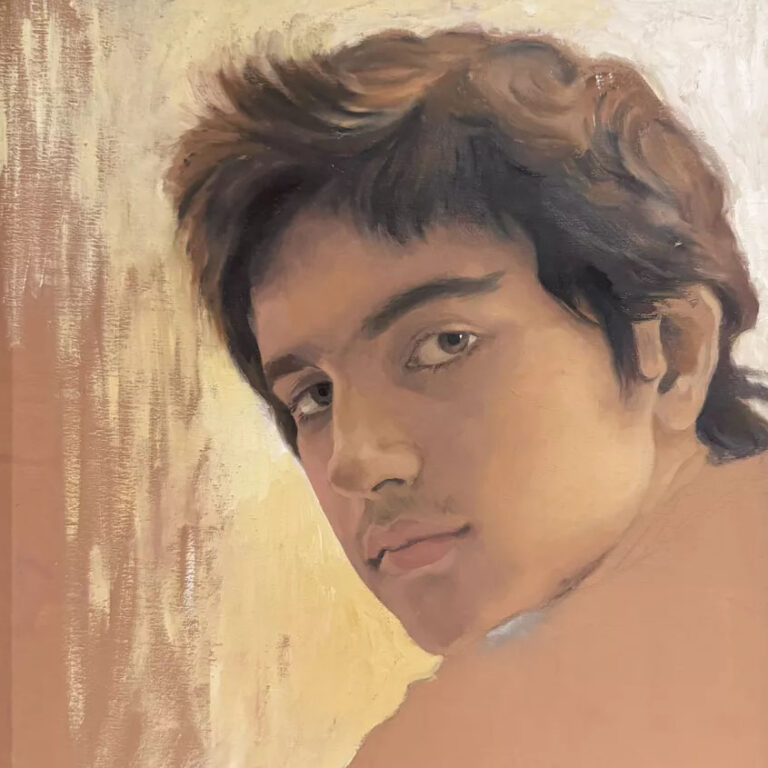
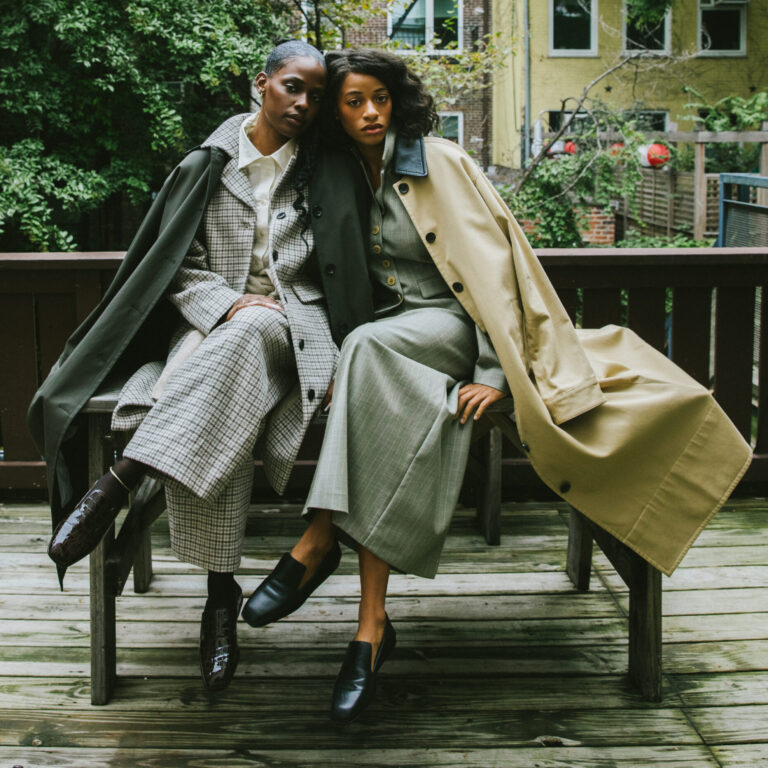
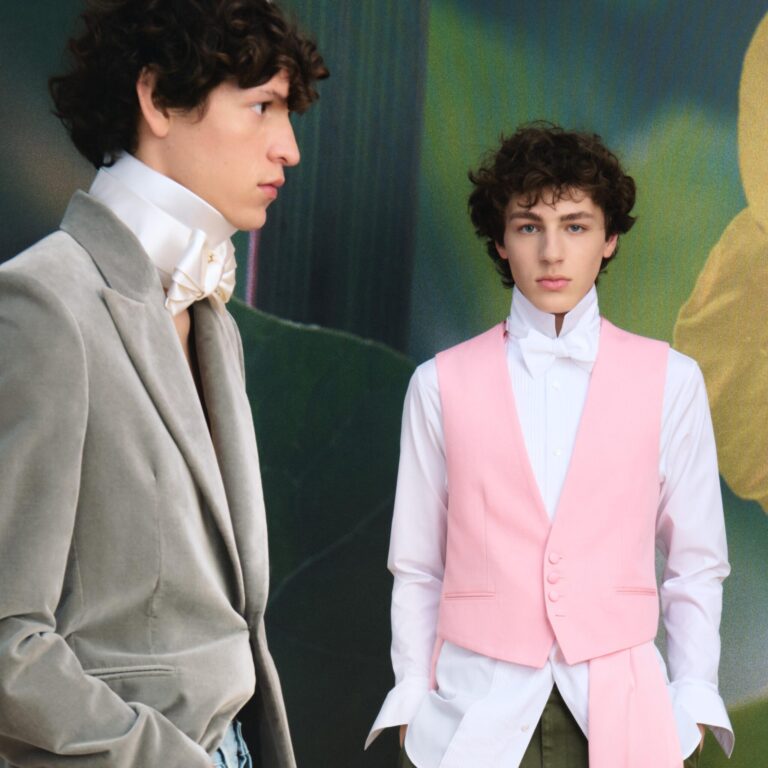
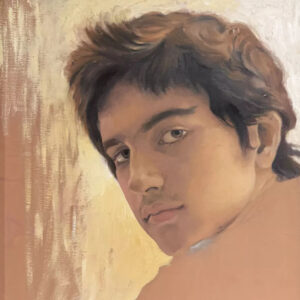
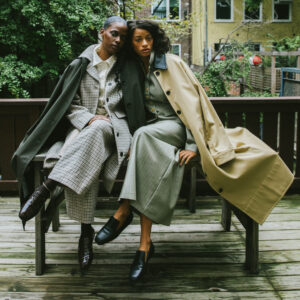
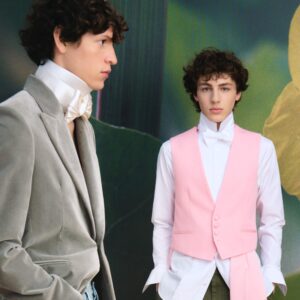

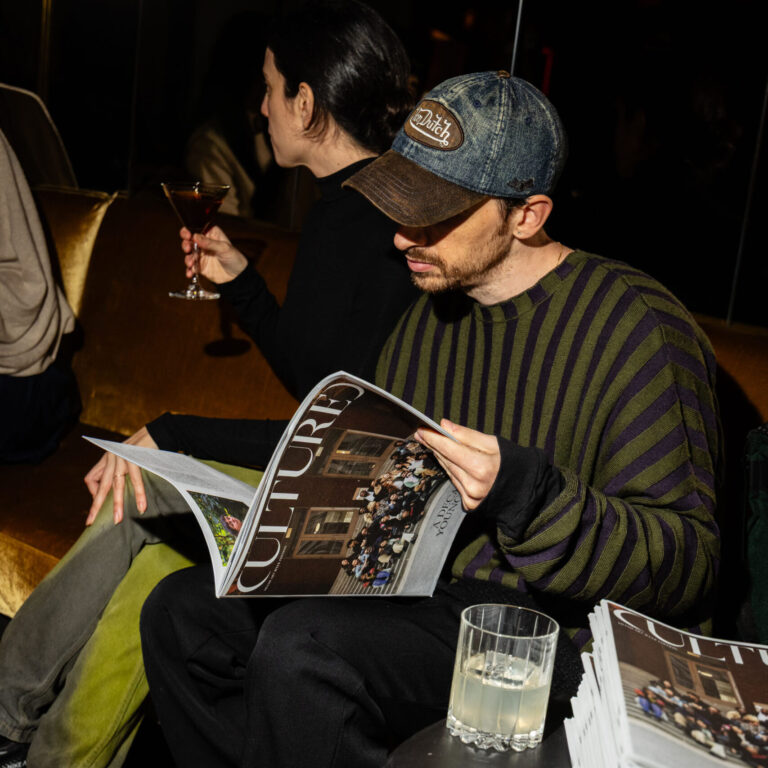

 in your life?
in your life?

